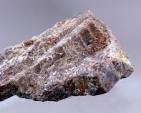
Andalusite: The Stone of Inner Vision and Elemental Stability
Geological Profile: A Mineral of Many Faces
Andalusite is an aluminium silicate mineral (Al₂SiO₅) renowned for its distinctiveness and geological significance. Belonging to the same polymorph group as kyanite and sillimanite, Andalusite forms under moderate temperature and pressure conditions, often found in metamorphosed sedimentary rocks.
Colour and Composition:
-
Typically beige to reddish‑brown, with pleochroic zones that reflect green, yellow, brown or pink hues when viewed from different angles.
-
Hardness on the Mohs scale: 6.5 to 7.5, offering durability for jewellery wear.
-
Crystallises in the orthorhombic system, often producing prismatic or blocky crystals.
Primary Sources:
-
Andalusia, Spain (namesake) – classic specimens.
-
Brazil, Sri Lanka, and the USA, notably in California and North Carolina.
-
Lesser-known localities include Madagascar and Myanmar, supplying collector-grade crystals.
Andalusite's pleochroism—displaying different colours across crystal axes—makes raw specimens visually compelling and highly prized in raw crystal jewellery and mineral specimen necklaces.
Energetic Properties: Clarity, Balance, and Inner Wisdom
Known as a stone of inner vision, Andalusite connects physical, emotional, and spiritual layers of being. Its energetic attributes centre on grounding thought, insight, and equilibrium.
Key Healing Themes:
-
Clarity and Decision-Making: Assists in seeing situations from multiple perspectives without being overwhelmed.
-
Emotional Balance: Stabilises mood swings and encourages calm during change.
-
Spiritual Anchoring: Aligns the mind with earthly wisdom and practical insight.
Linked to the solar plexus and third eye chakras, Andalusite facilitates intuitive connection while keeping one centred and composed. Practitioners often use it in crystal specimen meditation, intuitive readings, or as a grounding aid during energy healing work.
Collector Value and Natural Form Appeal
In its raw form—and especially in sharp, pleochroic crystals—Andalusite stands apart from more traditional gemstones. Its earthy tones and subtle shifts in colour evoke a sense of introspective harmony, making each piece uniquely expressive.
Collectors are drawn to:
-
Pleochroic brilliance – Each angle reveals new shades and layers.
-
Crystal clarity – Transparent zones highlight internal structures and inclusions, lending character.
-
Textured surfaces – Raw edges maintain the crystal’s natural context.
These qualities make Andalusite a captivating component in crystal specimen rings and raw mineral necklaces, offering understated beauty alongside energetic function.
Comparing Andalusite to Kyanite and Sillimanite
As a polymorph of both kyanite and sillimanite, Andalusite shares the same chemical formula but differs structurally, leading to unique energetic and visual expressions.
-
Kyanite aligns with high-vibration energy and spiritual activation, while Andalusite offers more grounded clarity.
-
Sillimanite is rarer and often associated with mental endurance, yet lacks the pleochroic appeal that makes Andalusite ideal for raw crystal jewellery.
This makes Andalusite a distinctive middle ground—connecting intuitive perception with steady practicality.
Use in Jewellery: Raw Elegance and Symbolism
In the realm of mineral specimen jewellery, Andalusite holds a quiet magnetism. Unlike polished gems, its raw, pleochroic surfaces exude a natural sophistication ideal for those seeking subtle power and elegance.
Popular Forms in Jewellery:
-
Crystal specimen rings – Showcase natural colour shifts and angular structure.
-
Raw crystal pendants – Embrace asymmetry and grounding energy.
-
Handmade gemstone rings – Pair well with bronze or matte-finish metals for earthy balance.
Its muted palette and inner fire make Andalusite a favourite for designs that honour the wild geometry of the Earth without overpowering the wearer.
Myth, Lore, and Subtle Symbolism
While Andalusite lacks the mythic renown of stones like lapis lazuli or obsidian, it has earned a quiet reverence in esoteric circles. Historically associated with "seeing through illusion", it was sometimes used by seekers or monks who valued contemplation and discernment.
Some practitioners consider Andalusite a guardian stone, said to absorb disharmony and redirect emotional turbulence into reflection rather than reaction.
Final Thoughts: Subtle Power for the Discerning Collector
Andalusite may not seek the limelight, but its unique optical qualities and stabilising essence make it a rare gem for those who value depth over drama. For collectors, healers, and artisans alike, it offers both beauty and insight—gently revealing more the longer it is held or worn.
For those curating a piece of raw crystal jewellery that whispers rather than shouts, Andalusite may be the perfect companion—quiet yet wise, grounded yet visionary.
At our UK atelier, pieces featuring natural Andalusite are curated with intention, allowing the stone's raw, primal form to remain untouched by excessive polish. Each creation honours the Earth’s own geometry—offering not merely adornment, but resonance.